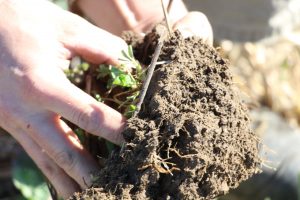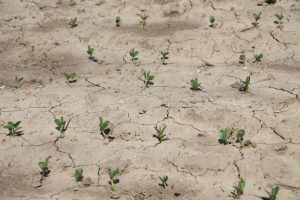Agronomy, Conservation, Homepage Slider
Healthy Plants Create Healthy Soils
By James Hoorman, Hoorman Soil Health Services
Spring is a time for new growth by plants, animals, and microbes. As temperatures warm, microbial populations double with every ten degrees Fahrenheit increase in soil temperature. As days get longer, the sun’s energy is captured by plants and that energy feeds microbes and almost all living organisms on earth. Keeping ourselves well fed depends not only on the sun’s energy but also having healthy microbes, healthy plants, and healthy soils recycling soil nutrients.
When plants are healthy, they transmit more energy into the soil in the form of root exudates and sugars to feed the microbes. Unhealthy plants do the opposite which means soils become unhealthy. In a typical unhealthy soil, plants are operating at about 15-20% of optimum photosynthesis efficiency so they are putting less energy in the form of sugars into the soil, the microbial population is lower and less diverse, which results in inefficient mineral uptake. Unhealthy plants and soils then tend to have more insect problems, diseases, and of course weeds which are the first soil colonizers.
Healthy soils create healthy plants which can increase photosynthesis rates 30-60% resulting in higher sugars and root exudates to feed diverse expanding microbial populations for efficient mineral nutrient uptake by healthy plants. Insects and diseases are kept in check by predator and due to healthy plant competition, forces pests to look for sick plants. Healthy plants taste good because they have higher mineral content, test weights, protein, and lipid or fat content and other factors.
Many plants have the potential for a much higher yield capacity. The genetic potential of modern corn varieties is at least 1,100-1,500 bpa; however, less than ideal environments decrease yield potential. A corn seed needs to support the newly emerging corn plant for 10-12 days. Healthy soils produce healthy corn seed packed with many nutrients to get that corn seed off a great start. It’s too late now, but farmers might want to think about what environmental conditions their crop seed was grown and what impacts that might have for next year’s growing crop.
The environment determines genetic expression in all living organisms. As humans, only about 10% of genes that control our bodies come from our ancestors. The other 90% are determined by the environment and the microbes living in our bodies. Environment determines what genes are expressed. One prominent scientist (Luther Burbank) noted, “Heredity is nothing more than stored environment!” and “Environment is climate mediated by nutrition!” So healthy soils produce healthy plants and healthy people and vice versa. 
Keeping plants healthy and producing higher yields is every farmer’s goal. For a corn plant, the first 9-12 days of growth determines the number of ears that plant will grow. Days 14-21 determines the number of rows of corn kernels and around 42-49 days, the number of corn kernels per plant. Environmental stresses such as drought, excess water, cold or very hot temperatures, and soil conditions will determine the nutrient needs of that plant and how healthy the plant will be to produce that yield.
Plants need adequate light, water, carbon dioxide, good chlorophyll, and manganese to produce healthy plants. Farmers can sometimes control water with irrigation and good drainage, but the two most limiting elements are carbon dioxide and plant available manganese to split the water molecule. Ohio soils have lost 50-70% of their soil organic matter levels, so carbon is almost universally deficient for optimum growth. Growing cover crops, adding manure or compost, and avoiding excess tillage conserves carbon dioxide. Soils need high SOM, good aggregate stability, and porosity to maximize plant uptake of carbon dioxide.
Three nutrients that increase chlorophyll in the plant are nitrogen, magnesium, and iron. While many of our soils have plenty of iron and manganese, often these two elements are not in a plant available form. Iron helps the plant make chlorophyll for optimum photosynthesis and turns the plant leaves dark green, maximizing photosynthesis. Manganese deficiency is a hidden hunger in most plants and is easy to see. If plant veins are lighter green then the plant tissue between the veins (almost always the case) then manganese is lacking. The easiest short-term fix is to apply foliar applications of iron or manganese, commonly done on soybeans.
Healthy soils require good plant nutrition from diverse and expanding microbial populations. Keeping the soil undisturbed, keeping the surface covered with residue, maximizing live plants and roots year-round, and increasing diversity keeps soils, plants and humans healthy.